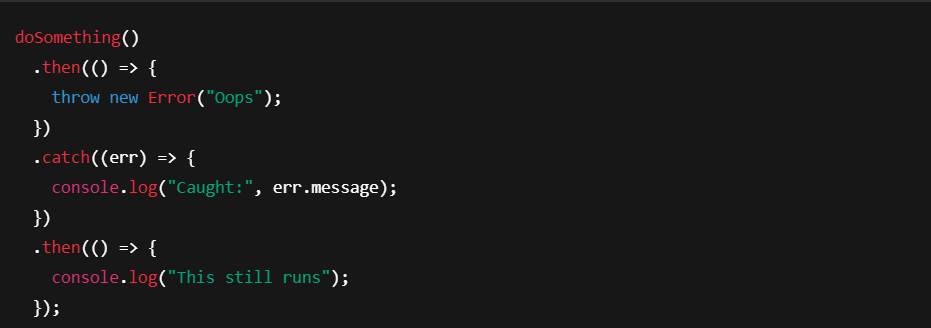Javascript Internals Part 3
 Piyush Ashok Kose
Piyush Ashok Kose
Callback Hell:
JavaScript’s asynchronous nature is powerful — but it comes with challenges. If you’ve ever dealt with deeply nested callbacks, you’ve experienced what’s known as Callback Hell 😵💫. Luckily, modern JavaScript has evolved to handle async flows more cleanly, thanks to Promises and async/await.
In this blog, we’ll unravel:
What is Callback Hell?
Why is it bad?
How Promises solve the problem
Promise chaining, error handling, and best practices
🔁 Callback Hell: What & Why?
1. What is Callback Hell?
Callback Hell occurs when you have several nested callback functions, usually while handling asynchronous operations. It looks like this:

This nesting structure leads to:
Poor readability
Harder debugging and testing
Inflexible code reuse
📌Also known as the “Pyramid of Doom,” callback hell causes your code to drift rightward, making it messy and hard to maintain.
2. Inversion of Control
In this model, control is handed over to another function (or library). You rely on it to call your callback correctly. But:
What if it doesn’t?
What if it calls your callback multiple times?
What if it forgets?
You lose control over your application flow — a dangerous place to be in production environments.
🧩 Enter Promises — A Cleaner Approach
3. What is a Promise?
A Promise is a JavaScript object that represents the eventual result (or failure) of an asynchronous operation.

4. Promise States
A Promise has three states:
pending: Initial statefulfilled: Operation completed successfullyrejected: Operation failedOnce resolved or rejected, the result is immutable — it cannot be changed.
5. Why Use Promises?
Cleaner, readable syntax
Avoid nested callbacks
Better control of asynchronous flows
Chainable with
.then()and.catch()
🔗 Promise Chaining
Here’s the power move — chaining.

Each .then() returns a new Promise, passing results down the chain without nesting.
🔥 Common Mistake
❌ Incorrect:

✅ Correct:

Always return from
.then()— either a value or another Promise.
🛠 Creating Promises
You can create a custom Promise using the constructor:

resolve(value): Fulfill the Promisereject(error): Reject with an error
🔥 Throwing Errors
Manually trigger errors:

🚨 Error Handling with .catch()
Use .catch() at the end (or anywhere) in the chain:

🔍 Scope of .catch()
Catches errors in all previous
.then()callsThe chain continues after
.catch()unless you re-throw

📌 Key Concepts Recap
✅ Always return a value (or Promise) from .then()
✅ Use .catch() wisely for scoped or global error handling
✅ Avoid inversion of control by structuring async logic clearly
✅ Chain your Promises vertically, not nested like callbacks
✅ Prefer async/await for even more clarity in modern JS
🚀 Final Words
Promises were a game-changer in JavaScript. They gave us structure, control, and readability in the async world. While async/await is even cleaner, understanding how Promises work under the hood is essential for any JavaScript developer.
🔥 Still using callbacks? It’s time to level up your async skills!
Subscribe to my newsletter
Read articles from Piyush Ashok Kose directly inside your inbox. Subscribe to the newsletter, and don't miss out.
Written by
Piyush Ashok Kose
Piyush Ashok Kose
Piyush Kose is a passionate Full-Stack Developer with a strong foundation in modern web technologies. He specializes in JavaScript, React, Node.js, and backend development, with experience in building responsive, scalable, and efficient web applications. Piyush actively shares technical knowledge through blogs and community discussions, aiming to simplify complex topics for learners and developers alike.